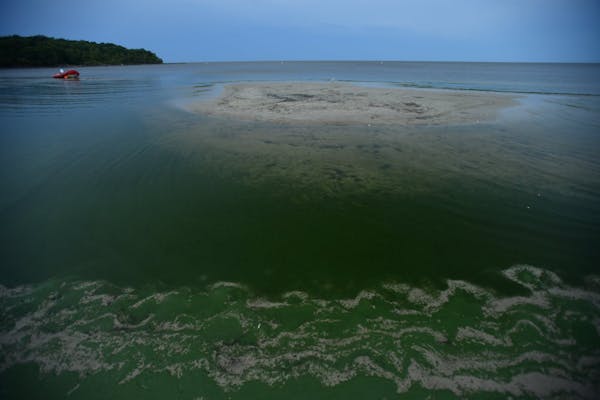Unless people know where they've been, it's difficult for them to know where they are. This always has been true and might be even more so now, given the speed at which change is occurring.
I was thinking about this last week as I reread the October 1950 edition of Sports Afield, one of a collection of old sporting magazines I keep.
The magazine had a painting by the late Minnesota wildlife artist and raconteur Les Kouba on the cover, touting a story inside titled "Nordern Bluebills" by the late, and legendary, Minnesota outdoor scribe Jimmy Robinson.
Viewed through a 2020 lens, the magazine provides valuable insights into just how much change has occurred in the "outdoors" world, and especially in the outdoors publishing world, in the past half-century or so.
It's no secret that print publications today, perhaps especially magazines, are struggling, in part because advertising is being divvied up among so many mediums, not least those that are internet-related.
Additionally, by some measures people aren't reading as much as they once did, or at least not reading in ways they did.
Consider for example the quantity of pages (142) of that vintage Sports Afield edition, the number and breadth of its advertisers (seemingly endless) and the length of its stories (ditto).
Each underscores not only how much magazines have changed over the past 70 years, but how much society has changed.
Spend just a few minutes, for example, with older outdoors magazines and you'll quickly appreciate that they spoke to a far broader swath of the American public and its interests than is the case with similar publications today.
That's because, a half-century ago, far larger percentages of Americans considered themselves "sportsmen" and "sportswomen" — meaning, generally, hunters and anglers — than is the case today.
Then as now, however, magazines and other media intent on staying in business had to reflect their readers' interests and lifestyles. In doing so, they also encouraged and helped perpetuate those interests and lifestyles.
Thus, throughout American history, huntin' and fishin' stories have been more than mere yarns. They have been the sparks that have helped keep interests in these activities alive while also, as a critical corollary, inspiring and sustaining people's concern for the natural world.
Unfortunately, the converse is also true. As specific-topic media, such as outdoor publications, shrink and/or cease publication, readers whose interests otherwise might have been validated and indeed nurtured by the publications' continuance, have been left to find and/or develop other interests.
Which is what is happening, albeit gradually, today as media outlets, television, certainly, but also newspapers, cut back or eliminate "outdoors" coverage (this newspaper generally being a notable exception).
Unsettling in this regard was how the Worthington Daily Globe recently ended the outdoors column written for 17 years by Scott Rall.
Rall wasn't the only Daily Globe freelancer who lost out as the newspaper, for economic reasons, cut back to two issues a week.
But the loss of his popular column likely will, over time, have ramifications in southwest Minnesota, as the Daily Globe publishes fewer reports about habitat development; about young people participating in outdoors activities such as trapshooting; and about the foibles of Canada geese, as Rall wrote recently in the smaller Rock County Star Herald, where his column now appears.
Other Minnesota outdoors writers and photographers have experienced similar losses of markets for their reportage. In some cases, this is because larger papers such as the St. Paul Pioneer Press have virtually eliminated outdoors reporting, and in other cases, as with Rall, because smaller, more regional papers are shrinking for economic reasons.
Not all news is bad. The Duluth and Grand Forks papers — both of which, like the Daily Globe, are owned by Forum Communications, headquartered in Fargo — still provide strong, staff-driven outdoors coverage, as does another Forum publication, the West Central Tribune, headquartered in Willmar.
"I don't write a column," said West Central Tribune staffer Tom Cherveny, 64. "Instead, in addition to my regional reporting, I write about the outdoors. I do get far more comments on my outdoors stories than anything else I do."
In coming days, when Cherveny's paper cuts back from publishing five days a week to two, the page of space he's had on Saturdays will remain, he said.
Meanwhile, the biggest losers, oftentimes, in this constantly fluctuating media/outdoor participation matrix, are state conservation agencies. As has occurred in some states, particularly those on the East and West coasts, as less media coverage has contributed to less outdoor participation, and vice versa, fish and wildlife agencies have lost funding, power and relevance.
As noted at the beginning of this column, people who doubt this simply don't know their history and therefore can't tell how much the landscape around them has changed.
Noting here, for the uniformed, that bluebill ducks are relatively infrequent visitors to Minnesota nowadays, this is how much things have changed:
"In the next several years," wrote Jimmy Robinson in that 1950 Sports Afield edition, "bluebills kept me out on the marshes and lakes around Richville (Minn.). It was, and is, one of the great duck regions of the country. Besides the famous Dead Lake, there were Marion, Pine, Star, Walker, Pickerel (lakes), all still fine duck producers, and many others. A boat was easy to borrow from a friendly farmer. … We anchored half-baked decoys in front of a crude blind, and they did the trick, particularly with bluebills, which in late season always were the most numerous ducks."
danderson@startribune.com

Anderson: Celebrate Earth Day by rekindling real connection to nature.
Anderson: Anglers protesting tough new Mille Lacs rules are wrong

Anderson: Courts, not politicians, should rule on Red Lake, White Earth lands

Anderson: Multimillion windfall gets invasive carp deterrent moving
![A young whitetail deer searches for food as another blanket of snow coats the arrowhead. ] Minnesota -State of Wonders, Arrowhead in Winter BRIAN PETE](https://arc.stimg.co/startribunemedia/WK32UWWY6FKNWJUIYCJ6ZPT4AU.jpg?h=91&w=145&fit=crop&bg=999&crop=faces)

